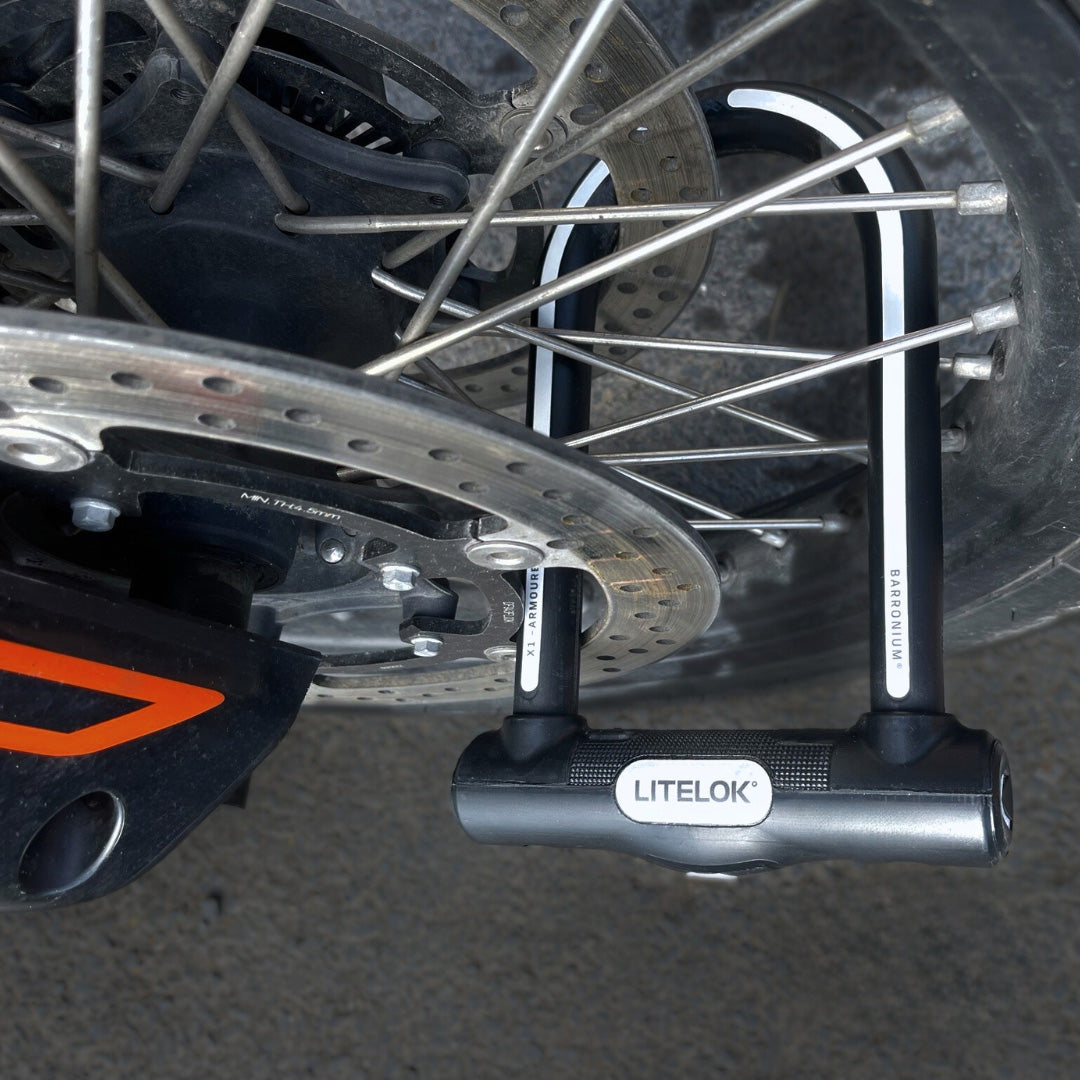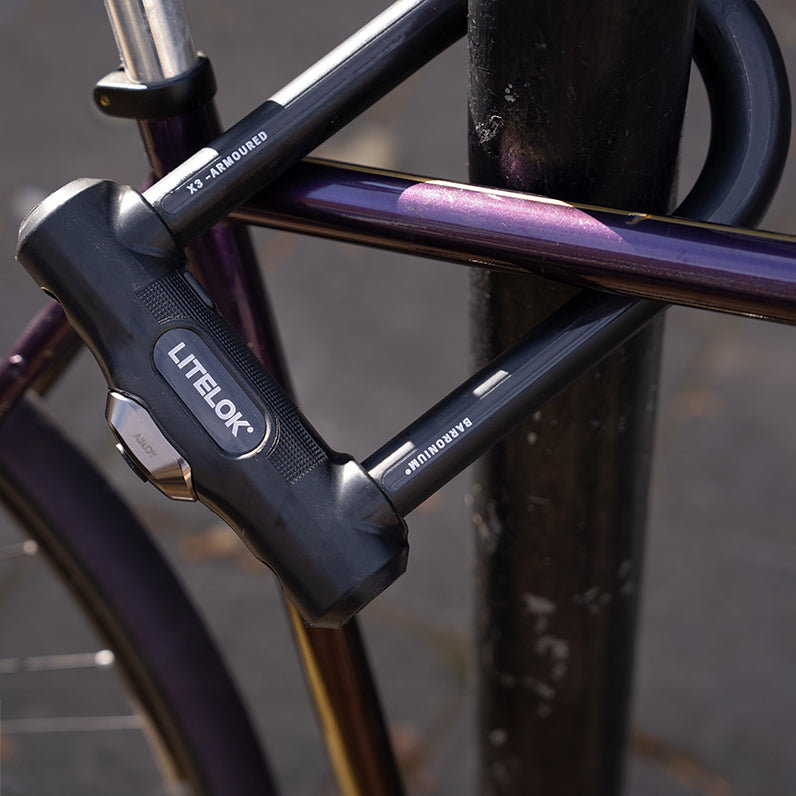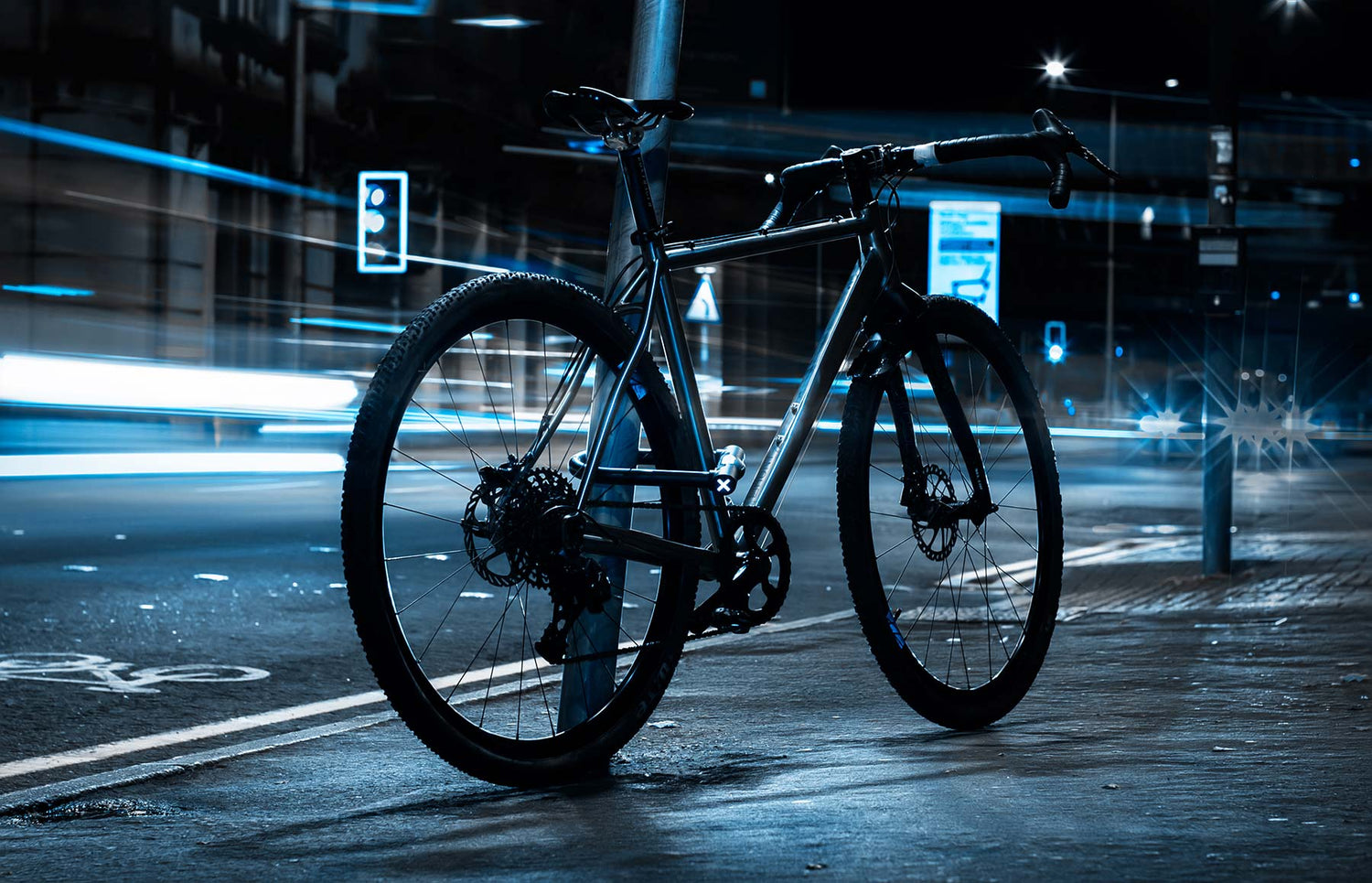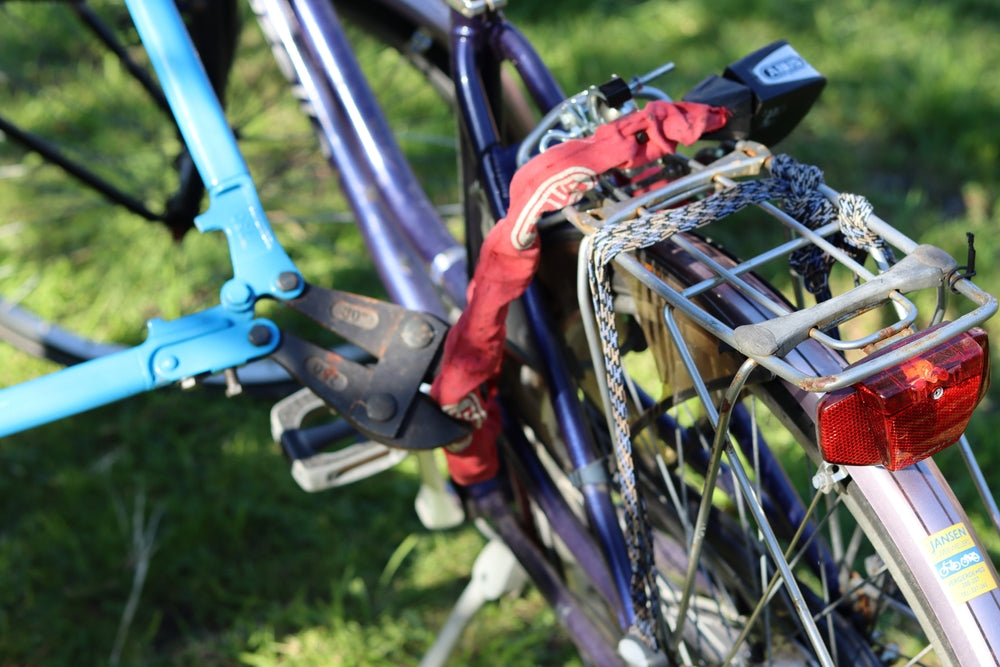Over the past few years, the value of bikes has increased, but locks which were once considered secure can no longer protect from every threat.
At one time, buying a silver or gold rated lock would have provided adequate protection against most common tools. However nowadays, the unfortunate reality is that things have moved on, and angle grinders are increasingly becoming the bike thieves’ tool of choice, cutting through market leading unarmoured locks in seconds.
As a security brand, we were regularly asked, ‘are your locks angle grinder resistant?’. They weren’t until X. We spent 5 years researching and developing, working with some of the world’s leading material scientists, to develop Barronium™, a super hard ceramic/metallic composite armour that repels angle grinder attacks by turning the grinder's energy and force in on itself. And so LITELOK X was born.

Bike theft statistics UK
According to The Bicycle Association, in 2020, over 3.1 million bikes were purchased in the UK. The bike boom during the pandemic saw a 15% rise in bike sales since 2015. A recent Mintel report on the UK Cycling Market revealed that the bike sales value totalled an estimated £1.25 billion in 2021 and that 'e-bikes now account for over a quarter of all consumer spending on bikes.'
With cycle participation at its highest level in five years, the average price of a bike also increased by 20% since 2020. The ONS Crime Data survey found that the average cost for stolen bikes in 2019-2020 was £348. However, as cyclists, many of us know bikes often exceed that, both in cost and sentimental value. Data also shows that over half of bikes (54%) reported stolen are taken from the home.
According to cycle insurer, Bikmo’s bike theft map, there were 67,116 reported thefts in 2021. Although bike thefts are reportedly falling, the national average for the number of cases where a suspect is identified and charged was just 1.4% in 2020, according to an investigation by the Daily Telegraph. Perhaps unsurprising given that the number of police fell from 172,000 in 2010 to 160,000 in 2021. Whilst there hasn’t been a more recent update, statistics from Stolen Bike UK’s 2016 stolen bike study showed that 71% of people didn’t report the theft to police.
How bike theft has changed
In 2020, Sold Secure introduced a new Diamond rating to account for the rise in e-bikes sales and the average value of bikes. Sold Secure write test specifications for each rating based on data from Police, the insurance industry, and other relevant parties.
Talking to Guy McCaffery, Lab Manager at Sold Secure about the way test specifications have changed, he said, "We maintain all of our specifications, updating them as new attack methods become prevalent; in particular, as cycling and the average bicycle value have increased significantly in recent years, so has bicycle theft; thus the attack methods and tools used have evolved, becoming heavier duty than they were many years ago, due to the fact that the demand for used bicycles has skyrocketed, along with more powerful tools becoming cheaper and more readily available."
Angle grinders: The tool of today’s bike thief
Whilst not the most scientific method, a quick Google search reveals that battery powered angle grinders are available for as little as £40. According to the National Police Chiefs Council, tools have changed too, "Previously the tool of choice was £10 bolt croppers...but now we’re seeing increasing numbers of angle grinders being used."

The unfortunate reality of bike theft is, once they are gone, people are rarely reunited with their stolen bike. Whilst recovery happens, Police often have no way of identifying who they belong to. Statistics suggest that only around 5% of bikes are actually returned to their owners. Whilst statistics relating to specific tool use are not currently accessible, the ONS predict that in the future it will be possible to provide further information about incidents as more detailed data sources become available.
How to protect your bike from theft
Discussing the matter of bike security with the Police, their suggestions for keeping your bike safe include:
Registering your Bike
The best chance of getting your bike back (as well as creating an additional deterrent) is to register your bike with a database like BikeRegister or Immobilise. To do so, simply register your bike on their website. There are also tamper-proof security kits available as well as warning labels to help deter thieves.
BikeRegister is a Police-approved database that’s free to use. It helps identify you as the owner in the event your bike is stolen. Immobilise is a database for any kind of possession, but it is used by Police to trace owners of lost and stolen property.
Make note of your serial number
It may seem simple, but making a note of your bike’s serial number is important. They are often scratched off, but if registered with a bike database, and you have a record it’s easier to match them up.
Take Photos – including photos of any locks
Bike insurers will often ask to see proof of receipts, even of your bike locks. It helps to have images of your bike (s) and locks in the event they do get stolen. In the event of a theft, you can share photos on social media to help others identify your bike. This is especially helpful if your bike is distinctive, or you’ve changed several components.
Lock your bike to an immovable object with two locks
Locking your bike at home or whilst out is vital. Better yet, for the ultimate protection when away from home, lock your bike to a Secured by Designed approved cycle rack where possible.
Using two locks is one of the best ways to keep your bike safe. Make sure you lock both the frame and wheels; it helps keeps everything secure and can slow thieves down.
Buy the best lock you can afford
For some, buying a lock is a big expense, but if you’ve already spent upwards of £1000+ plus on a bike, getting the best lock you can afford is an investment. Our LITELOK X range offers unparalleled levels of protection from angle grinders and all other commonly used tools. Independently tested by Sold Secure and given the highest rating (Motorcycle Diamond), X locks have been tested against the most current attack methods. LITELOK X offers the highest level of theft resistance available and is designed to prevent even the most destructive attacks. The reality is that if you don't own an armoured bike lock then your bike is not protected against angle-grinders.







Leave a comment
This site is protected by hCaptcha and the hCaptcha Privacy Policy and Terms of Service apply.